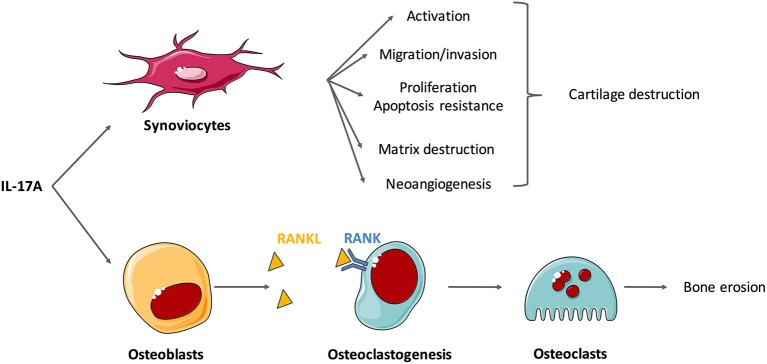Figure 2.
Effects of interleukin (IL)-17A on isolated cells involved in the synovitis. Rheumatoid synovium is characterized by hyperplasia, neoangiogenesis and excessive inflammation. IL-17A mediates cartilage and bone destruction that occurs in rheumatoid arthritis (RA) mainly through its action on synoviocytes and osteoblasts. In vitro experiments show that IL-17A induces synoviocyte activation (e.g., production of IL-6 and IL-8), migration and invasion that promote cartilage destruction. Through the induction of matrix metalloproteinases (MMP), IL-17A induces matrix destruction. It also favors proliferation and apoptosis resistance and the neoangiogenesis required for pannus development. In addition, IL-17 promotes receptor activator of NF-κB ligand (RANKL) expression on osteoblasts that binds to RANK, activates osteoclastogenesis and finally triggers bone erosion by osteoclasts.

